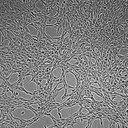Free radical-scavenging activities of Crataegus monogyna extracts.
关键词
抽象
The aim of this study was to investigate antiradical activity of aqueous and ethanolic hawthorn fruit extracts, their flavonoids, and flavonoid combinations.
METHODS
Total amount of phenolic compounds and the constituents of flavonoids were determined using a high-performance liquid chromatography. The antioxidant activity of Crataegus monogyna extracts and flavonoids (chlorogenic acid, hyperoside, rutin, quercetin, vitexin-2O-rhamnoside, epicatechin, catechin, and procyanidin B(2)) quantitatively was determined using the method of spectrophotometry (diphenyl-1-picrylhydrazyl (DPPH.) radical scavenging assay and 2,2'-azino-bis (3-ethylbenzthiazoline-6-sulphonic acid)(ABTS.+) radical cation decolorization assay). The level of tyrosine nitration inhibition was determined using a high-performance liquid chromatography.
RESULTS
Ethanolic hawthorn fruit extract contained 182+/-4 mg/100 mL phenolic compounds, i.e. threefold more, as compared to aqueous extract. The antioxidant activity according to DPPH. reduction in the ethanolic extracts was higher 2.3 times (P<0.05). The ABTS.+ technique showed that the effect of ethanolic extracts was by 2.5 times stronger than that of aqueous extracts. Tyrosine nitration inhibition test showed that the effect of ethanolic extracts was by 1.4 times stronger than that of aqueous extracts. The investigation of the antiradical activity of the active constituents in aqueous and ethanolic extracts revealed that epicatechin and catechin contribute to radical-scavenging properties more than other components. Procyanidin B(2) only insignificantly influenced the antiradical activity of the extracts.
CONCLUSIONS
Both aqueous and ethanolic hawthorn extracts had antiradical activity, but ethanolic extract had stronger free radical-scavenging properties, compared to the aqueous extract. The antioxidant activity of the studied preparations was mostly conditioned by epicatechin and catechin. The individual constituents of both extracts had weaker free radical-scavenging properties than the combination of these substances did.


